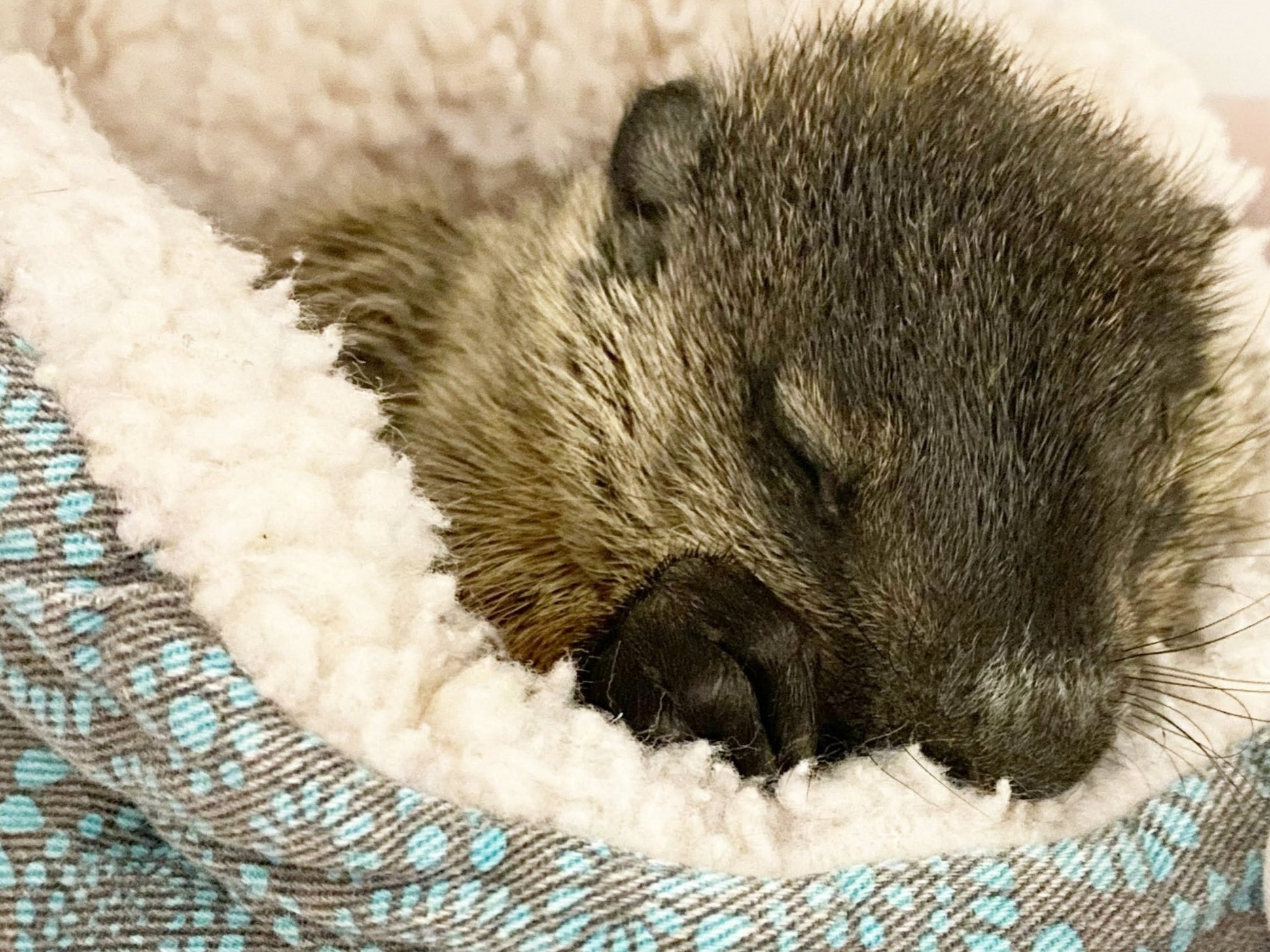
Help! I Found a Groundhog!
Groundhogs are a Rabies Vector Species (RVS). Any mammal (including humans) can get rabies, but cases are most commonly reported from Rabies Vector Species like foxes, raccoons, skunks, groundhogs and bats, as well as stray cats and dogs. You should avoid handling an RVS, but if it is absolutely necessary, always handle it with caution by wearing thick gloves. An RVS cannot be relocated in Pennsylvania if trapping. Please understand that an RVS does not mean it is automatically carrying rabies.
Remember: Remember: It is illegal to keep and raise wildlife
Myth: A groundhog has rabies if it’s walking in circles
If You Find a Groundhog That:
Is not fully furred, and its eyes are sealed shut
Appears sick or injured
Is lethargic, disoriented or has difficulty moving/balancing
Is approaching humans
Has been in a dog or cat’s mouth
Was hit by a car
Has parasites, including fly eggs (look like little grains of rice)
This is an emergency. Receive immediate support here or contact your local wildlife rehabilitator.
If You Find a Groundhog That:
Looks like a miniature adult and can evade humans
Had its den excavated and the den location is known
This is normal! Groundhogs are independent between five and six weeks and will explore outside their dens. For more solutions to common problems with groundhogs in human spaces, visit this page.
How To Save Baby and Juvenile Groundhogs
Young groundhogs, called kits, pups or chucklings, are born almost entirely furless except for some short dark fur on their heads. It is unusual to encounter young groundhogs at this stage unless they have been accidentally excavated from their den. After a month in their den, they’re covered in fur and have opened their eyes. However, they’re still nursing from their mother and rarely leave home.
At five to six weeks old, young groundhogs will begin to emerge from their dens to forage for food. At this stage, they look like small versions of adults, are fully mobile and avoid humans. Once six weeks old, groundhogs are weaned and will no longer nurse from their mother. Family members may remain together until late summer.
Groundhog mothers typically only have one litter of chucklings per year from April-May.
How To Renest Groundhog Pups
If you find a groundhog pup with little to no fur walking around with no mother or adult groundhog nearby, renesting may be necessary. Pups are rarely found outside the den unless a mother was disturbed while relocating.
Wear thick gardening gloves. Groundhogs are Rabies Vector Species and rodents so they have a powerful bite!
Check the pups carefully for injuries. Purple or red spots under the skin are a common sign of bruising. If the pups appear injured, contact a wildlife rehabilitator immediately.
Do not give the pups any food or water — we want them to be hungry and call for mom!
Gather the pups and place them in a box that they cannot crawl out of. Make sure the box is also accessible for the adult groundhog to reach in and collect the pups. Older pups may need to be contained in a laundry basket with a 5 lb. rock or weight on top. The pups will not be able to escape, but their mother will be able to free them.
Keep the pups warm. This is a priority! Fill a bottle with hot water and wrap it in a towel. Place the wrapped water bottle securely in the box next to the pups. You may need to reheat the water bottle throughout the reunion process. You can also use heating pads, rice-filled socks or hand warmers. Note: If the pups can be returned directly to the original nest, no heat source is required.
Place the pups in a safe location as close as possible to where they were found.
Leave the area and watch from a distance. Mom will not come back if she senses danger (humans, pets, etc.).
Allow time from when they were found. Allow several daylight hours for mom to retrieve the pup(s). Mom may move her pups to a different location in the same den, since Groundhog dens are very large and complex. Finding a new den site is more of a challenge for Groundhogs than other species since it requires a lot of time and energy to construct their dens. Pups mature quickly so tolerance of the family and their den until the pups can leave on their own is best.
Contact a wildlife rehabilitator if the mom does not retrieve her pups by the next morning.
How To Save Adult Groundhogs
Groundhogs are independent once they’re weaned from their mother but may remain with their family for a few months. Groundhogs do not reach sexual maturity until two years and are not fully grown until they’re three.
Groundhogs live in large, complex dens that consist of many emergency exits and specialized chambers. Groundhogs may often burrow under human structures since they can provide a secure ceiling for their dens. Tolerance of groundhogs when possible is the best thing you can do in your spaces. For more solutions to common problems with groundhogs in human spaces, visit this page.
If a groundhog is suspected to be poisoned, lethargic, disoriented, injured or has difficulty moving/balancing, contact a rehabilitator immediately.
Do you still have questions after reading the information below? Contact us or a local wildlife rehabilitator!
Have you found this FREE information helpful? Help support our work and expand our services by giving a gift.
Resources
Answering the Call of the Wild by Erin Luther. Toronto Wildlife Centre


